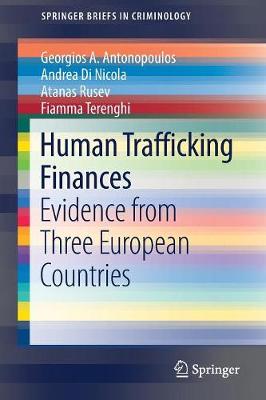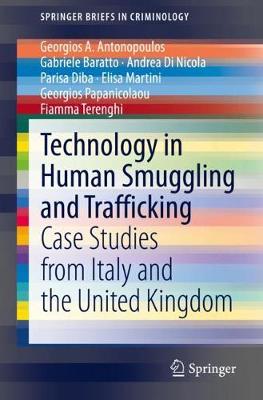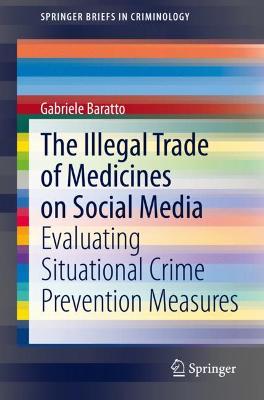SpringerBriefs in Criminology
3 total works
Human Trafficking Finances
by Georgios A. Antonopoulos, Andrea Di Nicola, Atanas Rusev, and Fiamma Terenghi
Drawing upon cross-disciplinary research expertise in criminology, sociology, law and economics, this book offers insights from law enforcement officers, policy makers, NGOs, and traffickers and their victims. Using three European countries - Bulgaria, Italy and the United Kingdom - it provides an account on the sources of capital for initiating and sustaining a human trafficking scheme, discussing the involvement of criminal structures, legitimate businesses, financial institutions, and information and communication technologies in the running of these enterprises. It also addresses the ways in which entrepreneurs and customers settle payments, the costs of conducting business in human trafficking, and how profits from the business are spent and invested.
This important contribution to the transnational organized crime knowledge base will be of interest to researchers and academics, as well as law enforcement, regulatory agencies, and policy makers combating human trafficking.
Technology in Human Smuggling and Trafficking
by Georgios A. Antonopoulos, Gabriele Baratto, Andrea Di Nicola, Parisa Diba, Elisa Martini, Georgios Papanicolaou, and Fiamma Terenghi
This brief offers a unique and innovative account of the role of internet and digital technologies in human smuggling and trafficking. It explores new illegal paths through the web by analyzing how traffickers and smugglers use the visible and dark web during different phases of the process, including recruitment, transportation, and exploitation. Featuring case studies from two European countries, Italy and the United Kingdom, it outlines the types of websites used in these processes, how they are used, and common behavior patterns. With a view of transnational criminal activities involving actors from individual criminal entrepreneurs to organized crime groups and fluid large criminal networks, this brief will be of use to law enforcement, researchers of trafficking and organized crime, and policy makers.
This book evaluates the impact of situational crime prevention measures implemented by social media platforms to identifying, blocking, and removing content linked to illegal traded medicines. It discusses the extent of social media usage in trafficking of medicines; the ease of access; visibility of the content; language of posts; products most traded; and types of posts. Research results support the hypothesis of the limited impact of these measures, due not to a lack of effectiveness but to asymmetrical implementation.
This volume will be of interest to researchers, law enforcement, policy makers, social media groups, public health practitioners.


